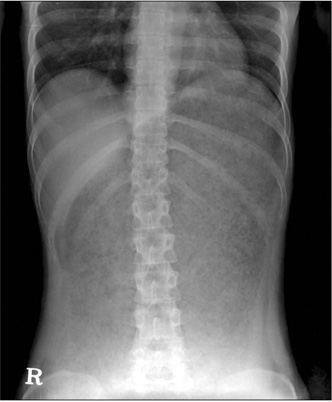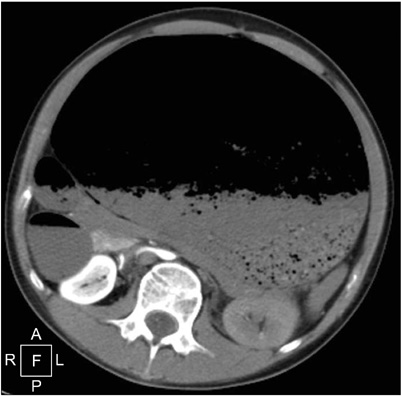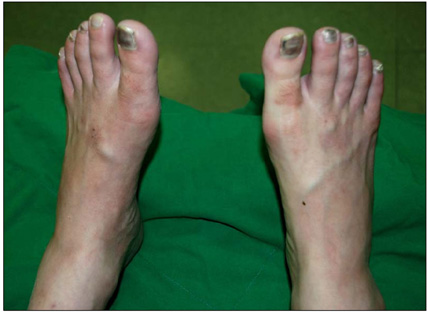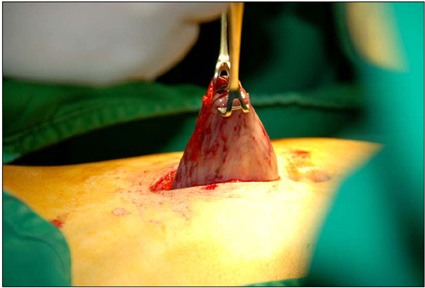J Korean Surg Soc.
2011 Dec;81(Suppl 1):S1-S5. 10.4174/jkss.2011.81.Suppl1.S1.
Abdominal compartment syndrome caused by a bulimic attack in a bulimia nervosa patient
- Affiliations
-
- 1Department of Surgery, Hallym University Sacred Heart Hospital, Hallym University College of Medicine, Anyang, Korea. kgiseup@hallym.or.kr
- KMID: 1445775
- DOI: http://doi.org/10.4174/jkss.2011.81.Suppl1.S1
Abstract
- We present a rare case of abdominal compartment syndrome due to a bulimic attack in a 19-year-old female patient with bulimia nervosa. She was admitted to our emergency room with complaints of progressive abdominal pain following bulimia. Computed tomography showed dilated stomach with food and air pressed other visceral organs and major abdominal vessels. Decompression using nasogastric tube or gastric lavage tube failed. At laparotomy, we performed gastrotomy and decompression was performed. After decompression, she fell into hypovolemic shock due to bleeding in the intra-gastric and peritoneal cavity. Twelve hours after the operation, the patient died due to refractory hypovolemic shock from uncontrolled bleeding following decompression of abdominal compartment. It should keep in mind that binge-eating habits in patients with bulimic nervosa could cause abdominal compartment syndrome due to gastric distension and this may be a potentially fatal condition.
Keyword
MeSH Terms
Figure
Cited by 1 articles
-
Acute gastric dilatation causing fatal outcome in a young female with eating disorder: a case report
Seung-Mok Youm, Ji Young Kim, Jeong Rim Lee
Korean J Anesthesiol. 2015;68(2):188-192. doi: 10.4097/kjae.2015.68.2.188.
Reference
-
1. An G, West MA. Abdominal compartment syndrome: a concise clinical review. Crit Care Med. 2008. 36:1304–1310.2. Turan M, Sen M, Canbay E, Karadayi K, Yildiz E. Gastric necrosis and perforation caused by acute gastric dilatation: report of a case. Surg Today. 2003. 33:302–304.3. Vettoretto N, Viotti F, Taglietti L, Giovanetti M. Acute idiopathic gastric necrosis, perforation and shock. J Emerg Trauma Shock. 2010. 3:304.4. Bailey J, Shapiro MJ. Abdominal compartment syndrome. Crit Care. 2000. 4:23–29.5. Parsak CK, Sakman G. Acute gastric dilatation and abdominal compartment syndrome as complication of pyloric stenosis. Internet J Gastroenterol [Internet]. 2007. cited 2011 Jan 18. 5(2):Available from: http://www.ispub.com/journal/the_internet_journal_of_gastroenterology/volume_5_number_2_13/article/acute_gastric_dilatation_and_abdominal_compartment_syndrome_as_complication_of_pyloric_stenosis.html.6. Mohapatra B. Abdominal compartment syndrome. Indian J Crit Care Med. 2004. 8:26–32.7. McCord JM. Oxygen-derived free radicals in postischemic tissue injury. N Engl J Med. 1985. 312:159–163.8. Guan Y, Worrell RT, Pritts TA, Montrose MH. Intestinal ischemia-reperfusion injury: reversible and irreversible damage imaged in vivo. Am J Physiol Gastrointest Liver Physiol. 2009. 297:G187–G196.9. Kato LT, Poggetti RS, Fontes B, Massarollo PC, Younes RN, Heimbecker AM, et al. Evaluation of the mortality rate caused by different periods of selective portal vein occlusion in rats. Acta Cir Bras. 2007. 22:279–284.10. Luncă S, Rikkers A, Stănescu A. Acute massive gastric dilatation: severe ischemia and gastric necrosis without perforation. Rom J Gastroenterol. 2005. 14:279–283.
- Full Text Links
- Actions
-
Cited
- CITED
-
- Close
- Share
- Similar articles
-
- Repeated gastric dilatations leading to fatal abdominal compartment syndrome in a patient with bulimia nervosa
- Psychological Characteristics of Bulimic Women with and without a History of Anorexia Nervosa
- Cognitive Behavior Therapy of Bulimia Nervosa in a Male Patient: A Case Report
- Abdominal compartment syndrome caused by gastric distension in bulimia nervosa and fatal injury following surgical decompression - A case report -
- Treatment of Bulimia Nervosa: A Clinical Practice Guideline





